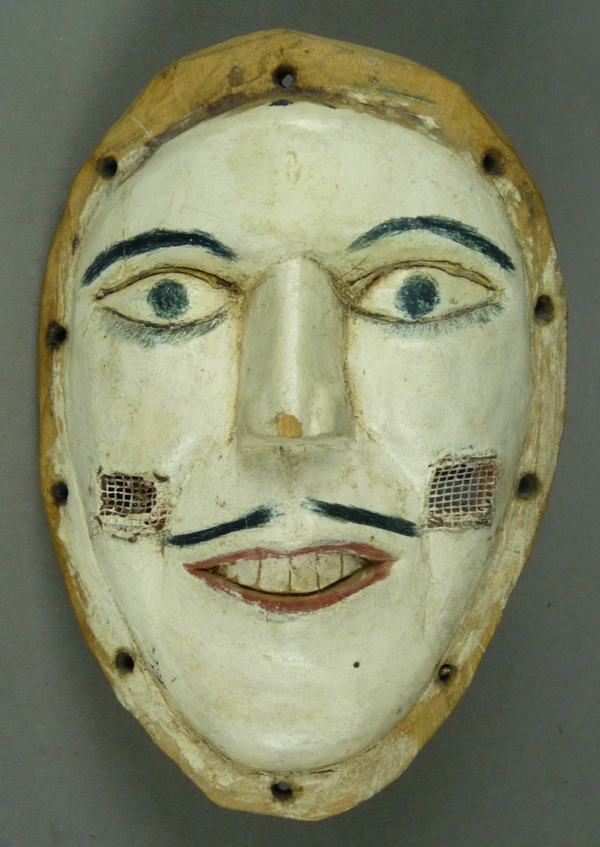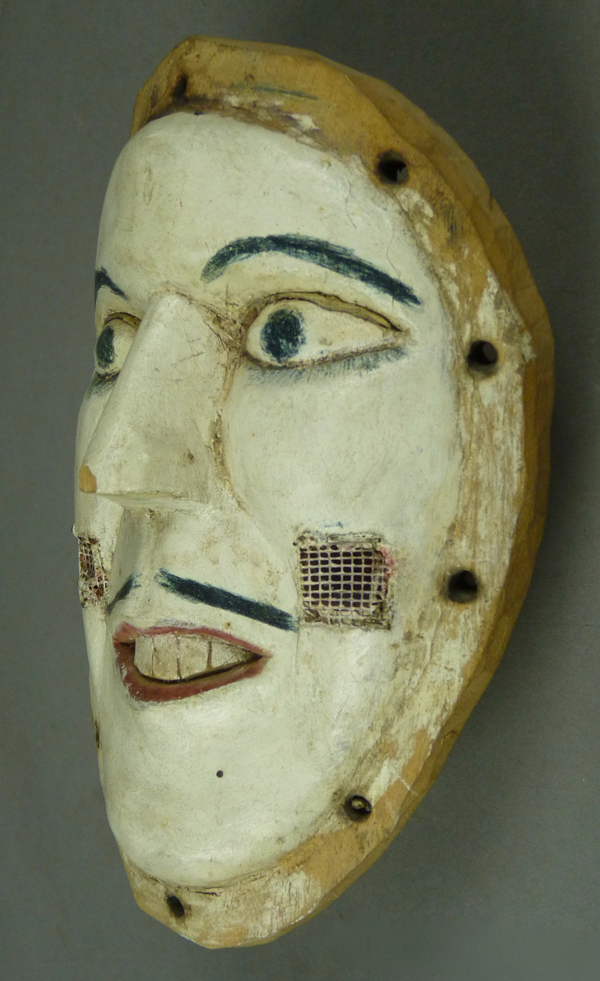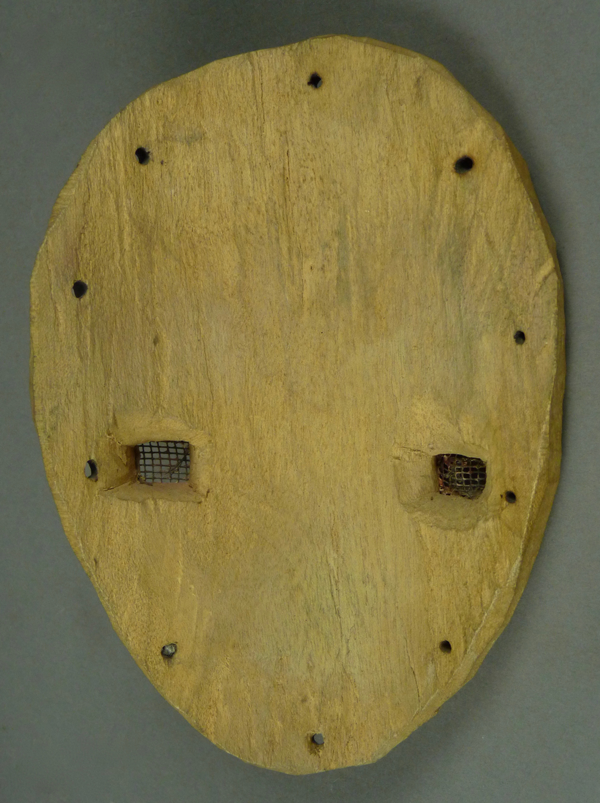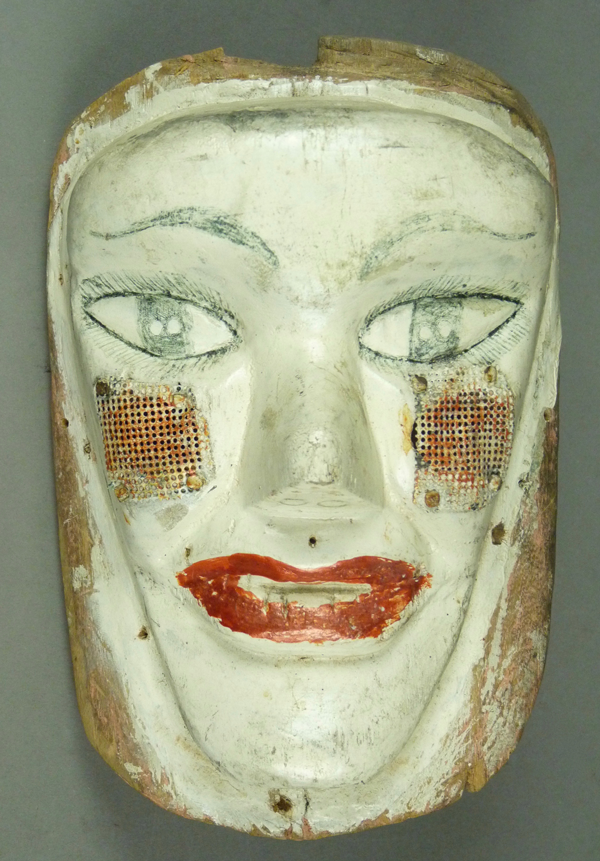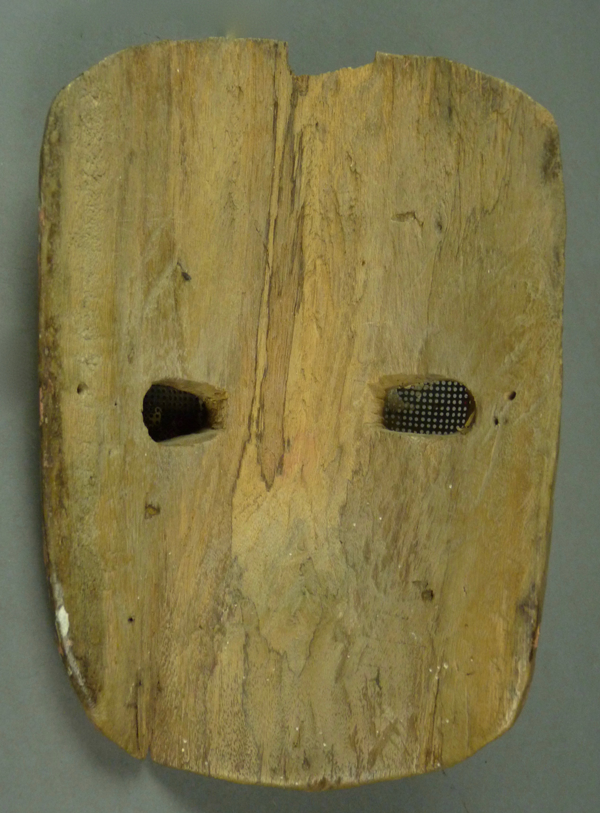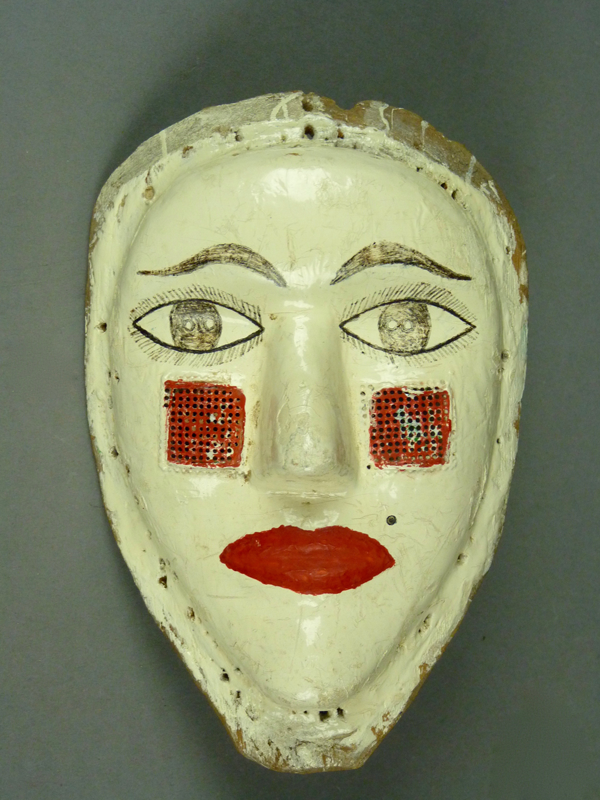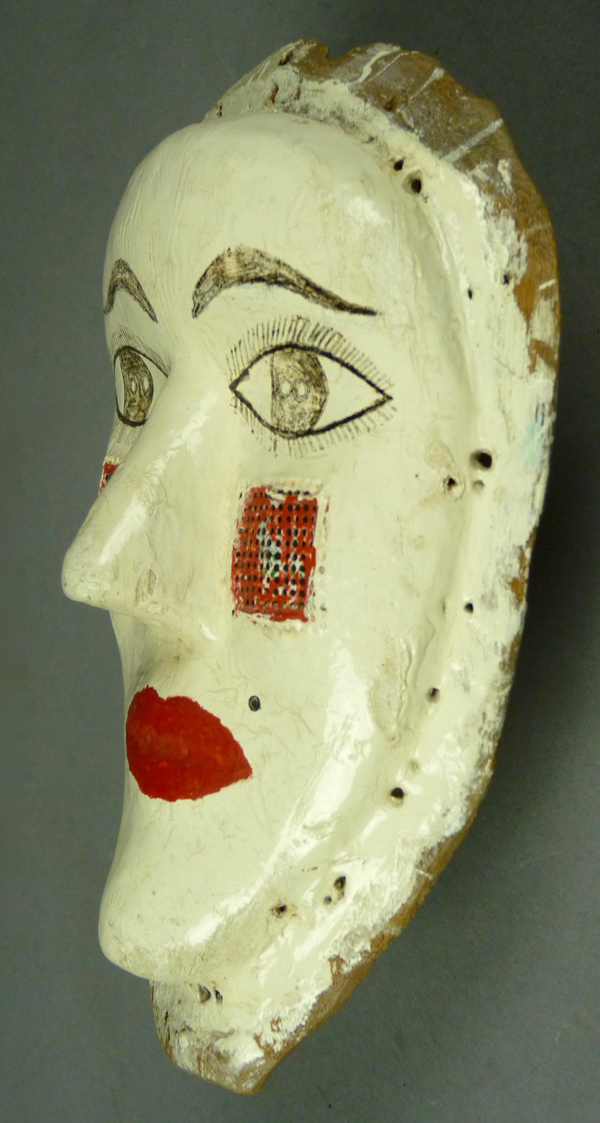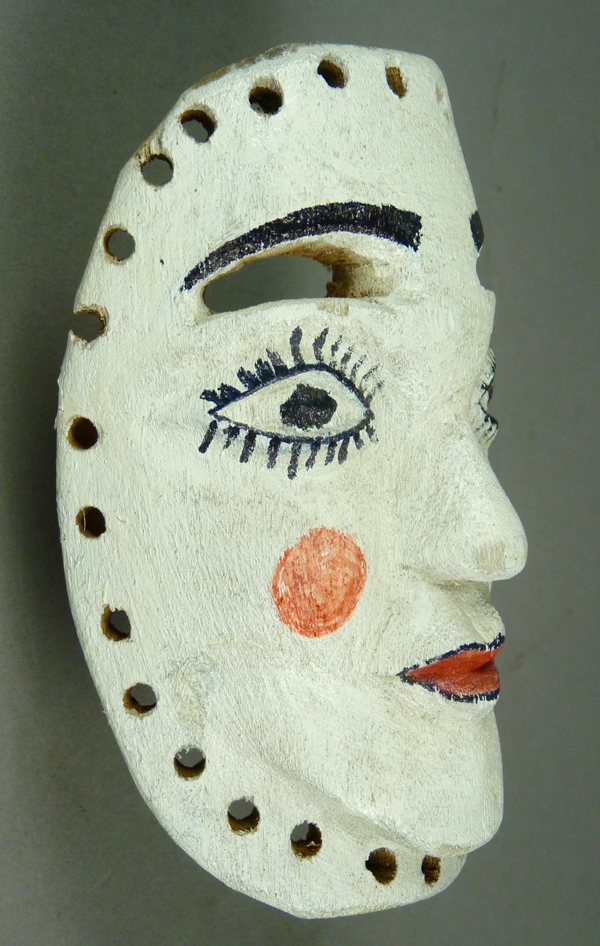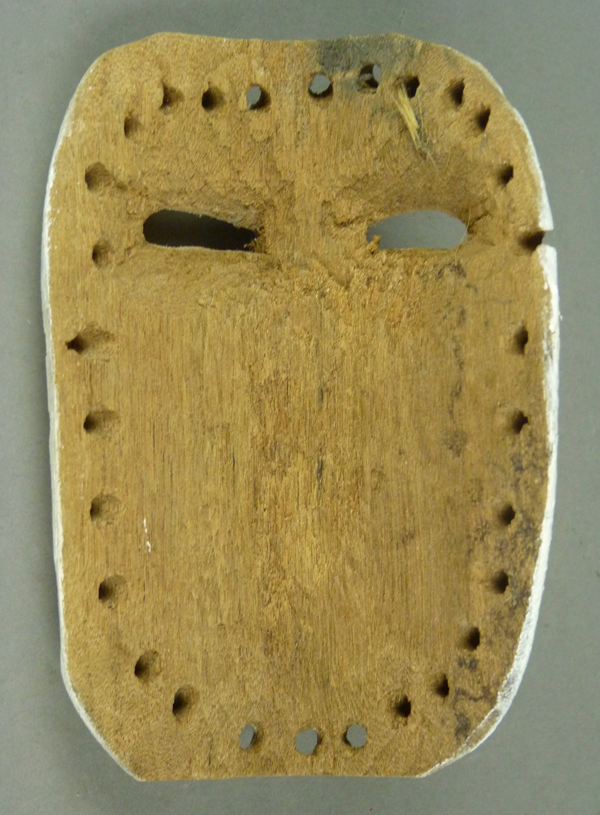During Semana Santa (Holy week, the week ending on Easter Sunday), the Yoeme (Yaqui), Yoreme (Mayo), and Cora Indians perform dance dramas that depict the Crucifixion and Resurrection of Christ. In Sinaloa Mayo towns, there are masked Judios who portray “Soldiers of Rome;” in such portrayals, they persecute Jesus and then repent after his resurrection. The Yaquis believe that the masks of these dance figures collect the evil that has accumulated in the village over the past year, and so their masks are most definitely burned on Holy Saturday to dissipate this evil. The Mayo Indians usually burn these masks, but sometimes they sell them to collectors instead, and the Cora performers routinely sell their masks to attending collectors. Traditionally the Mayo Judio masks were made entirely of goat-skin, but by the 1960s the Mayo Indians of Sinaloa had begun to construct their Judio masks with wooden face plates that are attached to goatskin cowls. James Griffith wrote about this innovation in a KIVA article—”Mochicahui Judio Masks: A Type of Mayo Fariseo Mask From Northern Sinaloa, Mexico” (Kiva, Vol. 32, No. 4, April 1967, pp. 143-149). Here is one of those face plates. I bought this one and the next from Jaled Muyaes and Estela Ogazon of Mexico City, in 2001.
In this evolving Mayo tradition, the cowls are burned while the face plates are retained for reuse in the following years. Sometimes the face plates are subsequently sold instead. This week I will show you some of those face plates. Next week I will show examples of Judio masks with face plates that were purchased after the fiesta by a Tucson collector, and in the following week we will examine Judio masks that appear to use actual masks in place of face plates. The YouTube™ videos in the following links are so recent that they show the Judios wearing traditional fur masks without any face plates (those with protruding long leather noses) along side others wearing fur helmets fitted with what appear to be wooden masks. The opening music for the first YouTube™ video is actually what would be played for Pascola dancing—lively fiddle music accompanied by rhythmic bass notes that are played on a harp.
https://www.youtube.com/watch?v=1xTJL5qS9ig
https://www.youtube.com/watch?v=TweoIEFAhOA
James Griffith wrote further about these traditions in “Ritual Meditation of the Life-Death Opposition; The Meaning of Mayo Parisero Lenten Masks,” a chapter in Behind The Mask In Mexico (Esser, 1988, pp 76-105).
Small squares of window screen cover the openings that the wearer’s eyes depend on for vision. Obviously the face plate is attached to a fur cowl that is overly large for dramatic effect!
This mask is 6½ inches tall, 4½ inches wide, and 2 inches deep.
The back of this plate dies show some staining from use.
In his earlier article, James Griffith included photos of Pariseros or Judios with female face plates. Here are two of those female face plates.
Note the double pupils in the painted eyes, an extremely mysterious and unusual feature.
On this face plate the vision openings are disguised by red painted spots on the cheeks.
This mask is 7½ inches tall, 5 inches wide, and 2¾ inches deep.
This back too shows staining from use. Note that the holes for attachment do not extend through to the back. Evidently this plate was attached to the hide cowl by nails or tacks.
This face plate was collected in Sinaloa by Thomas Burkhalter, in 1977.
This mask too has the double pupils . Perhaps the point of this painting is to suggest that the masked figure is seeing a face, or even a skull (i.e. death)?
There are those blushing cheeks (disguised vision openings) again.
This mask is 6½ inches tall, 4¼ inches wide, and 1¾ inches deep.
A darkly stained back. This plate was apparently attached to the hide cowl by lacing.
Finally, here is what appears to be a face plate from a Sinaloa Mayo Judio mask that would have been worn by a child. I received it without any provenance and I am uncertain about this one. Certainly it has an abundance of holes suitable for lacing it to a hide cowl.
This is probably from a later stage in the transition of the face plate masks to those with masks adapted for this use. Note for example the vision slits that have replaced the screen covered openings. On the other hand, this does appear to be a third example of the female faced Judios.
This mask is 6 inches tall, 3¾ inches wide, and 2¼ inches deep.
The back if this mask appears unused.
Next week we will examine three Judio masks with face plates that were collected by a Tucson tourist/collector immediately after the Mayo Easter fiesta in 1995, in Jahaura, Sinaloa.
Bryan Stevens

